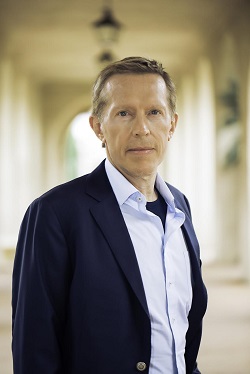Transcripts
 Erik: Joining me now is Alhambra Investments Chief Investment Officer, Jeff Snider.
Erik: Joining me now is Alhambra Investments Chief Investment Officer, Jeff Snider.
Jeff, thanks so much for joining us on the program, it’s great to have you back.
Jeff: Thanks, Erik, always a pleasure to be back with you.
Erik: Listeners, we’ve got a real treat for you. As many of you know, Jeff and I did a series called Eurodollar University, which was a chronological introduction to the Eurodollar system. We got from our most astute listeners who really dug into the material a lot of really positive feedback that it was some of the best content that we’d ever done. But we also got a bit of feedback from people who just said, look, I can tell that Jeff is a really smart guy, but this is a little over my head and I’m not really sure what the heck he’s talking about.
So what we’ve been trying to do – Jeff approached me about this in Vancouver, and we’ve been working together to try to recraft Eurodollar university, not from a chronological standpoint but more from a topological organization perspective.
So, Jeff, I want to start with what I think are some of your biggest and most bold contentions and ask you to address them in today’s interview.
We’ve been taught that the way the international monetary system works is the US dollar is the center of the whole thing. It’s the world’s reserve currency. And that means the US dollar is used for international trade settlement, and central bank reserve assets are denominated primarily in US dollars. And that puts the dollar at the center of the whole system.
 Erik: Joining me next is Professor Steve Keen who is both the author of Debunking Economics as well as the crowdfunded professor of economics on Patreon. Later on in this interview we’ll come back and tell you a little bit more about that.
Erik: Joining me next is Professor Steve Keen who is both the author of Debunking Economics as well as the crowdfunded professor of economics on Patreon. Later on in this interview we’ll come back and tell you a little bit more about that.
Steve, after our last interview I was left with my head spinning, as I always am, because you are just a firehose of fantastic information about economics, including those aspects of economics that deviate from the neoclassical school which all the big universities teach.
And I realized that it’s so unusual for me to disagree with you, but I left the last interview saying, wow, Steve is on the other side of a major argument which is, I’ve always felt that the US dollar, having the world’s reserve currency, although it may not benefit the entire world, certainly benefits the ability of the United States to fund its deficits. And there’s another argument which I think that you tend to favor, which is that it would actually be to the benefit of the United States if it would lose its reserve currency status of the US dollar.
So why don’t we start by you making that argument. How could losing reserve currency status possibly be to the benefit of the United States?
 Erik: Joining me now is Neil Howe, co-author of my favorite book of all time, business or otherwise, The Fourth Turning. Neil, thanks so much for making the time to join us today.
Erik: Joining me now is Neil Howe, co-author of my favorite book of all time, business or otherwise, The Fourth Turning. Neil, thanks so much for making the time to join us today.
Neil: Great to be here, Erik.
Erik: Now, for our listeners who may not be familiar with The Fourth Turning, I just implore you: Read the book. This is the most important book of our time, in my opinion. And that’s no exaggeration. Likewise, I strongly encourage you to listen to Neil’s earlier interview on MacroVoices. You can find that by just typing “Neil Howe” into the search box at macrovoices.com.
For anyone who’s not familiar, the basic thesis of The Fourth Turning is that we are all familiar with the business cycle: four- to seven-year cycles in the economy. There’s also a long way of business cycles: 80 to 100 years that you can think of as seasons or turnings, which really define important times in history.
Fourth turnings are when major things change. The last fourth turning before this one, of course, was the Great Depression and World War II. The one before that was the Civil War. The one before that was the American Revolution, and so forth.
A number of predictions that Neil made in the book were things like during this time – and this book was written way back in 1998 – he predicted that during the present moment in history we would be prone to electing extreme leaders and that there would be a lot of division in society as more and more people lost faith in long-standing institutions in society.
Neil, you’re batting a thousand, to be sure, with all of these predictions. But, as the man who made those predictions, I have to believe that as this fourth turning is unravelling before our eyes you must have a lot more insights in terms of how it’s going and maybe things beyond what you predicted in the book.
So, tell us a little more about what we’re seeing as this fourth turning unfolds.
 Erik: Joining me now is One River CEO, Eric Peters.
Erik: Joining me now is One River CEO, Eric Peters.
Eric, it’s great to have you back on the program. It’s been too long.
Why don’t we start with the big picture on the stock market? We’ve got a lot of people saying, hey, that Christmas massacre was the buying opportunity of a century, because we’re headed toward new all-time highs and everything looks great – quite a few other people, myself included, saying I think this is a bear market rally. We may find the top is already in and we’re headed lower.
What do you think in terms of the big picture and where this market is headed?
Eric: Hey, Eric, thanks for having me back. It’s always nice to chat. I actually think that the equity market peaked last January, actually, January of 2018. I know we made a subsequent higher high in September into early October.
But I think one of those things that was lacking in this entire bull market was a real period euphoria. And I think that last January we had that type of activity in the marketplace. I mean, there was a very powerful up-move. It was clearly driven by euphoria over the big tax stimulus.
I think that that’s what we need to see in order to see a market top. I think we’re in a market-topping phase right now. There certainly are all kinds of different cross-currents. Some of the big ones are continued easy monetary policy. But I think that there are some debt and growth dynamics here that are presenting all kinds of headwinds.

Obviously, the big news in the last couple of days is the Fed’s dovish reversal. And the thing that is just fascinating to me, the way I see this, is the Fed has basically admitted that the economy is not strong enough to continue their hiking cycle. And inflation has not surfaced the way that they hoped it would. And, based on this, the fact that they’re admitting that the economy is weak, everybody is celebrating and just can’t buy enough stocks.
Am I missing something? And what do you make of the Fed’s policy change in the last couple of days?
David: I actually started to see this coming in the last few months of
2018 when I could see some of the strains emerging in the global economy and the US does not live on an island. And you could see this in other central banks: Bank of Canada, Reserve Bank of Australia, the Bank of England. Just look at what Mark Carney has been saying, and not just about Brexit uncertainty but globally in general and I was waiting, actually, for the Fed to start talking about some of these constraints because they seem to have been like an ostrich with the head in the sand. I was amazed at that market maelstrom/meltdown in December that they actually would have raised interest rates. It was historic for the Fed to raise rates in the sort of market meltdown across the spectrum that we saw.
MACRO VOICES is presented for informational and entertainment purposes only. The information presented in MACRO VOICES should NOT be construed as investment advice. Always consult a licensed investment professional before making important investment decisions. The opinions expressed on MACRO VOICES are those of the participants. MACRO VOICES, its producers, and hosts Erik Townsend and Patrick Ceresna shall NOT be liable for losses resulting from investment decisions based on information or viewpoints presented on MACRO VOICES.
